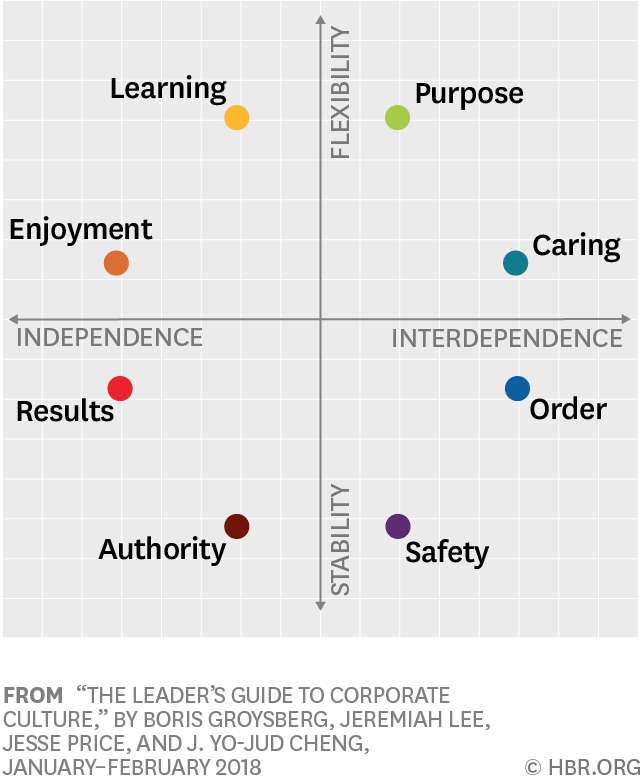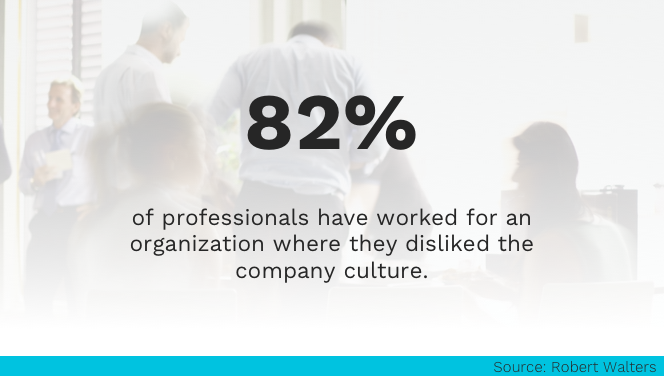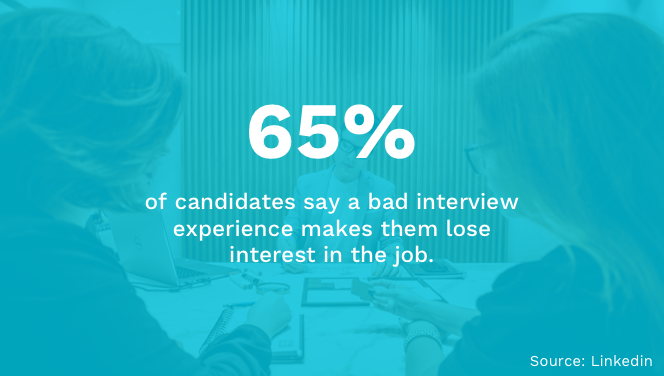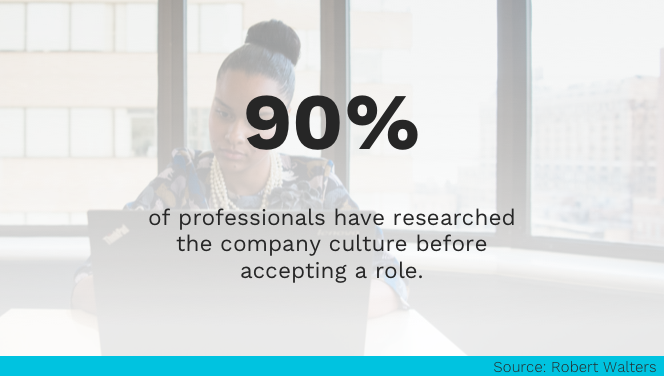When you’re hiring new people, you want to make sure they’re capable of doing the job. However, job-fit isn’t the be-all and end-all of a great hire. You also want to ensure they’re person-organization fit too.
But what is person-organization fit (P-O fit) and how do you find candidates with the right P-O fit for your company?
What’s in?
- What is person-organization fit?
- What are the benefits of hiring employees with good P-O fit?
- What happens if there’s a lack of P-O fit?
- How do you ensure person-organization fit in your candidates?
- Define what the person-organization fit means for your company
- Write compelling job postings
- Set your pre-selection process right
- Invite candidates to the office
- Improve your interview process
- Work towards your ideal company culture
- Use surveys and exit interviews to evaluate the impact of P-O fit
- Communicate your message everywhere
Like what you see?
Don’t miss out. Subscribe to our monthly digest to get the latest TA and TM resources delivered right to your inbox.
Person-organization fit vs person-job fit
What is person-organization fit?
Person-organization fit, also known as P-O fit or job-fit measures, is essentially compatibility between an employee and an organization. Person-organization fit is about the congruence of a candidate’s own beliefs and values with the mission, values, and ethics of your organization. In turn, these should also be reflected in your company’s culture.
What is person-job fit?
In addition to person-organization fit, there’s also person-job fit. This is sometimes called person to job fit, PJ fit, or PJF. Person-job fit is where a candidate has to be able to fulfill the job description requirements. Someone either has the qualifications, the specific hard skills, soft skills, cognitive ability, and requisite experience to carry out the role, or they don’t.
How to measure a person’s job fit
Person-job fit can be easily measured and tested. For example. through initial phone screenings and pre-selection assessments. These measures early on in the recruitment process help evaluate a candidate’s potential person-job fit.
How to measure a person’s organization fit
However, person-organization fit is harder to measure for. It can’t be so easily checked through formal testing and relying on gut feeling and bias is a no-go.
So how do you measure person-organization fit and how do you find candidates with the right P-O fit for your company?
Before we delve into the ‘how’, let’s first take a look at the ‘why’. Next, we’ll go through the benefits of hiring employees with good person-organization fit, and what can happen if there isn’t a great P-O fit.

An ideal qualified job candidate has a combination of P-O fit, person-job fit and the right experience.
What are the benefits of hiring for good person-organization fit?
There are likely to be quite a few good person to job fit candidates to fill your role, especially if you’re hiring for lower-level jobs. However, being able to do a job is no guarantee of a person’s likelihood to remain in the role, happy, or productive. So ensuring a good person-organization fit is likely to yield better retention results.
And yes, employee retention is a key advantage of hiring candidates with good P-O fit, but it isn’t the only benefit:
Retention – Just because an employee loves their job, doesn’t mean they’ll stay with your organization if they don’t feel they fit in there. When an employee feels a sense of fit with an organization this can result in their having a strong sense of involvement. They can also feel a strong bond with their work colleagues,. And by identifying with the organization’s mission and values, employees ultimately increase their desire to stay on with your company.
Productivity – An employee with good person-organization fit will likely have high job satisfaction. Why? Because they are committed to the company and feel like they belong. Good P-O fit employees strive to achieve the best results they can through their work because they want to. This means their productivity increases and their output is higher.
Engagement – Employees who fit positively with an organization tend to be happier. The result is being more actively engaged, contributing more, collaborating with colleagues better, and demonstrating more creativity in their work.
Referrals – Someone who likes where they work and feels a connection to your organization is more likely to refer friends and family to work for you too. And the benefits of referrals for recruitment are numerous, including shorter onboarding time, more productivity, faster time to productivity, and higher engagement. Essentially, when a person-organization fit recommends someone to come work for you, the referral is already an organic P-O fit.

Not only is the turnover lower in companies focusing on P-O fit, but the revenue and profit grow faster too.
What happens if there’s a lack of P-O fit?
Hiring is a two-way street – hiring the wrong candidate can have all manner of repercussions, not just for the company (74% of companies said it cost them on average $14,900 each time they hired the wrong person), but for the candidates too.
If there is a lack of P-O fit, both parties will suffer.
Lack of motivation – Poor person-organization fit can cause an employee to underperform. When other employees take up their slack, it leads to resentment among the team. And that causes collective low morale. Not to mention a decrease in output from the employee and unsatisfactory or lower quality work. Ultimately, this costs your organization in terms of lost revenue.
Increased stress and exhaustion – If someone doesn’t feel they fit in with your organization, it will cause them stress trying to stay positive. Trying to stay on top of work that doesn’t interest them, for an organization they feel doesn’t suit them, can be mentally and physically draining.
Employee turnover – As mentioned before, it costs the company every time some leaves. For instance, by increasing costs for hiring and training a new recruit, plus the role remains unfilled for even longer.
How do you ensure person-organization fit in your candidates?
1. Define what the person-organization fit means for your company
Person-organization fit will look different for every organization as each company has its own values and company culture. You need to know what values you want to share with your employees.
Take Ben and Jerry’s for example. It’s not just enough for them to turn a profit, or make great ice cream. They want the business to do good in the world too. Or Google, with its original core value of ‘don’t be evil’, now replaced with ‘do the right thing’. Or Starbucks, who want to celebrate humanity, create connections and communities, and be an alternative place between work and home.
Once you’ve figured out what shared values you want to have with your employees, you then need to figure out how these should translate into their day-to-day, on-the-job behavior.
Be as specific as you can with your values. That way, the recruiter knows what they’re looking for, and the candidate knows what they’re signing up for.

This is a framework to identify company culture and leadership styles in organizations. Analyzing how people at your organization interact and how they respond to change will help you determine the company culture style to work with.
2. Write compelling job postings
If you want to attract candidates to your company who will have a great P-O fit, make sure you create job adverts that will appeal to them.
If you are trying to be different to your competition, to appeal to the top candidates, you want to be veering away from the same old dreary text they see everywhere and instead put yourself in your ideal candidate’s shoes – what would you want to see in a job advert that would make you leave where you already (comfortably) are, and come and work for your organization.
One way to do this is to ensure you capture and instill your organization’s values into your job postings. You can use principles of values-based recruitment to write your job ads.
Also, make sure that the language you use in your job postings is inclusive. Download our 11 Tips For Writing Inclusive Job Ads to always have the advice at hand!
3. Set your pre-selection process right
Appealing to the right people through your job adverts is the first step to ensuring you hire employees with great P-O fit, the next is weeding out any who may have slipped through the net.
Consider including a culture fit assessment and/or situational judgement test during your pre-selection process. One big reason is to avoid wasting anyone’s time by carrying the wrong candidates forward to interview or beyond. You will be able to see how candidates’ preferences for organizational culture compare to the reality at your company.
Stop guessing,
Start data-driven hiring.
Learn how you implement a modern candidate selection process, that is: streamlined, experience-driven and backed by data.

4. Invite candidates to the office
As mentioned before, the P-O fit is a two-way street. And what better way to find out if someone will fit with your company culture and see how people work in your organization than by letting candidates see your company from the inside?
This way, candidates can judge for themselves if and how they would fit in with your company. They can also meet their potential colleagues at the same time. In fact, 51% of candidates want to visit your office to learn about your company culture.
Anyone who doesn’t like what they see will self-deselect. Don’t worry, these poor person-organization fits are actually good drop-off. You’re naturally whittling candidates down to only those who can see themselves working for your company.

Inviting candidates to your office will help both them and you make informed decisions about working at your company.
5. Improve your interview process
P-O fit isn’t about hiring someone you can see yourself having a drink with after work, or basing your decision on a ‘gut decision’ (or any other hiring bias). Instead, make sure your interview process is as swept up as it can be by ensuring interviewers only ask the right questions (and don’t deviate off-script pushing their own agenda).
Ask questions such as:
- What is the work environment or culture where you are most productive and/or happy?
- What is the management style like that will enable you to produce your best work?
- How do you feel about being friends with coworkers?
- What must be present in your work environment in order for you to be successful and feel happy in your work?
- What is your preferred work style?
- How would your co-workers describe your role in a team?
Train interviewers on what they should look for in candidates who potentially have P-O fit.
Have multiple relevant people, for example team members, talk to the candidate at a later stage of the interview process. The candidate gets to see a broad spectrum of people who work for your organization. Plus, different people will look for different things in a candidate, and will each have a unique perspective on the candidate.
Finally, don’t just say to a candidate that they aren’t a fit. Try to explain why they aren’t a fit with your organization. It could help them find their dream job in an organization they may not have considered before.

Build an interview process that is informative for both parties and encourages interest in your organization. Make sure to ask relevant questions and provide feedback to your candidates.
6. Work towards your ideal company culture
Bear in mind you may not have created your ideal company culture yet, and if you have, don’t let it stagnate.
You have to recognize what culture you want to have at your company and what culture you actually have. So if you aren’t there yet, you need to hire people who will help you get where you want to be, but at the same time, they also need to fit into the current culture. No pressure.
7. Use surveys and exit interviews to evaluate the impact of P-O fit
Ask yourself – are people who you consider to have good P-O fit staying longer with your company? Are they more productive? Does the lack of P-O fit actually cause your employees to leave?
If you aren’t sure of the answers to these questions, make sure you include them in exit interviews – you can guarantee honest answers from people who have nothing to lose by telling you the truth.
Or if no one is leaving, send out surveys to current employees to test the waters and see how they feel about P-O fit. Don’t ask, don’t get!
8. Communicate your message everywhere
If you want to ensure P-O fit, make sure all of your outgoing (and internal) communications convey your core values. From your social media posts to your press releases; from your job adverts to your company website.
Ensure everything that talks about you or represents your company delivers the message of what your values are, and what you as a company stand for – like attracts like after all.

You can influence the message you’re sending out about your company culture through your EVP and employer branding. Be consistent and use the same channels your candidates are using to get your message out.
A final word
Bringing employees with the right person-organization fit on board can bring many benefits to your company. It starts with attracting qualified candidates through well-written job postings, continues with an optimized selection process and ends with an evaluation of results. However, bear in mind that to hire for P-O fit, you first have to know what it entails for your organization!
Stop guessing,
Start data-driven hiring.
Learn how you implement a modern candidate selection process, that is: streamlined, experience-driven and backed by data.


